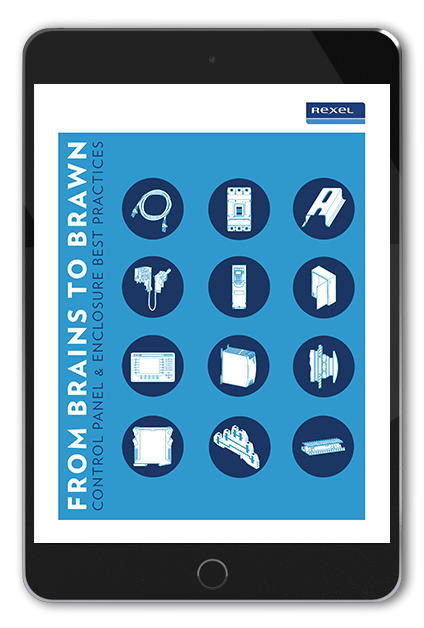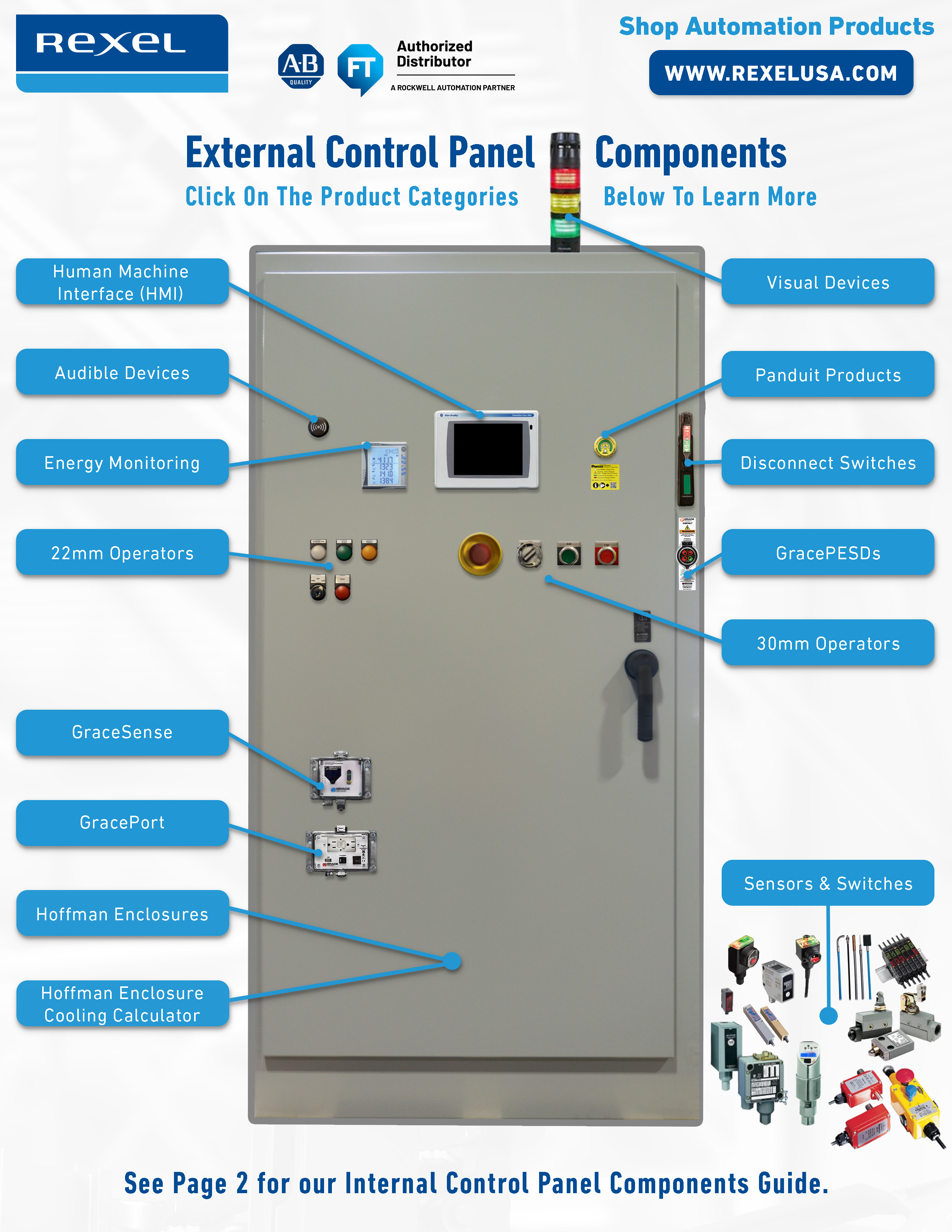
Blog > Automation > 4 Essential Tips for Protecting Your Control Panels
4 Essential Tips for Protecting Your Control Panels
5/10/24 | Chris Jackson, Automation Specialist - IC/SSC
“How do we keep our control panels safe?” is often a key question for manufacturing electricians and maintenance personnel. The factory floor presents several threats, from accidental bumps by workers to passing forklifts. Depending on your industry, extreme temperatures, corrosive environments, or even rigorous washdown procedures can contribute to control panel damage.
So how do you protect the vital mechanical systems that keep your automated lines running? Here are 4 essential tips:
1. Location is Key
Step one to ensure proper control panel safety is its placement. Control Panel enclosures should be placed in a controlled environment, shielded from direct sunlight, dust, water, excessive heat/ cold, hazardous gases, and/or harmful chemicals. However, this isn’t always possible so careful consideration must be taken with the planning, layout, and design process.
Whether your control panel is outdoors or on the factory floor, a thorough assessment of the environment and/or placement is critical. It is imperative that you identify potential hazards such as:
- Dust
- Grease
- Chemicals
- Hazardous gases
- Temperature extremes
- The path of operating equipment such as Forklifts
Ensuring the maximum longevity of your electrical equipment begins with carefully selecting the optimal location and protection methods of the control panel. This also includes its distance from the equipment that the control panel is operating in, as well as its accessibility by the operator and/or qualified maintenance personnel.
Taking the above factors into consideration, you can select the appropriate placement/location as well as the appropriate enclosure NEMA rating or Ingress Protection (IP) rating code that’s required for protecting the control panel from the elements. If the enclosure placement is subject to physical damage due to forklifts or other heavy industrial machinery, the addition of bollards and/or barricades to help protect the control panel and/or associated personnel may be necessary.
Don’t forget: Depending on your geographical location and industry, consider seasonal variations and sun exposure when evaluating the environment. Using a data logger can be a valuable tool to find potential heat spikes throughout the day. If necessary, the addition of controlled heating and/or cooling can be added to your enclosure to help ensure these types of temperature variations are mitigated as much as possible. There are tools like Hoffman’s heating/cooling calculator that can help you to determine the appropriate mitigation method.
Related Post: Understanding the Importance of Thermal Audits for Industrial Enclosures
2. Choosing the Right Materials
After you’ve identified the location(s) for your control panel(s), make sure they’re made from the right material, as each has its own strengths and weaknesses:
- Painted Carbon Steel: A cost-effective option for moderate environments. Standard painted enclosures are typically painted gray or light gray, however custom paint colors are also available and can help provide a one-of-a-kind solution.
- Stainless Steel 304: Offers superior corrosion resistance but can be challenging to modify on-site.
- Stainless Steel 316: Provides the highest level of corrosion resistance but comes at a premium.
- Fiberglass Reinforced Polyester: Lightweight and corrosion-resistant but may not be suitable for high-impact environments.
- Polycarbonate: Offers excellent impact resistance and clarity but may not be ideal for extreme temperatures.
3. Be Mindful of Stainless Steel
Stainless steel enclosures offer exceptional durability; however, they can present their own challenges. Cutting and/or modifying these enclosures in the field can be quite time consuming and expensive, especially if a mistake is made during the process. For these situations, pre-machined “plug-and-play” enclosures can be a more efficient option for the installer. If you do require a modification or even a completely custom enclosure, Rexel has the expertise and resources available to you to help get the job done.
Here are a few things to keep in mind when it comes to stainless steel enclosure environments.
- Standard Environments: Painted carbon steel offers a cost-effective option for most applications. The standard paint color is typically gray or light gray, however custom paint color options are also available and can help provide a one-of-a-kind solution.
- Corrosive Environments: Stainless steel, particularly 316, provides superior resistance to harsh chemicals.
- Washdown Environments: Stainless steel is the go-to choice for withstanding high-pressure cleaning.
4. NEMA Rating Matters for Stainless Steel Washdown
NEMA ratings are set by the National Electrical Manufacturers Association (NEMA) and are used to define the types of environments that electrical enclosures can be used in. NEMA states that their ratings are designed to “promote the safety, efficiency, resilience, and sustainability of products and systems used to power the world.”
Often used in the food and beverage industry, washdown procedures utilize high-pressure water and chemicals for sanitation. For these environments, stainless steel enclosures are the preferred choice because of their superior corrosion resistance. Remember, even with washdown, the appropriate NEMA rating will ensure your control panel remains protected.
- Pre-Machined Enclosures: For stainless steel, consider pre-machined enclosures to save time and material waste during on-site customization.
- Heat/ Cold Management: Don't forget seasonal and or daily temperature variations. Data loggers can help identify potential overheating or freezing related issues, while air conditioning and or heating solutions can help to mitigate these potential downtime causing risks.
We Can Help
By understanding the specific impact environments and machinery can have on your enclosure, you can ensure your control panel will remain safe and operational. This will help keep your production flow smooth, minimize downtime, and protect your valuable investment.
The experts at Rexel have the knowledge and skillset to help identify and/or answer your control panel questions. Contact us today to learn more or get started on a control panel modification or custom assembly for your application.
FREE Resources
Control Panel & Enclosure Guide
Control panels are critical to keeping your operations moving. Our FREE eBook, “From Brains to Brawn: Control Panel & Enclosure Best Practices,” offers valuable tips to save you time, minimize frustration, and empower smarter decision-making. Even if you're new to panel building, our glossary ensures you'll grasp key terminology with ease.
ABOUT US
Rexel Automation Solutions is committed to helping our customers achieve their desired business outcomes by delivering best-in-class customer experience and support.
We specialize in industrial automation services, solutions, and products that transform your application and operational needs into fully realized solutions, delivering measurable results and profitability for your company.

